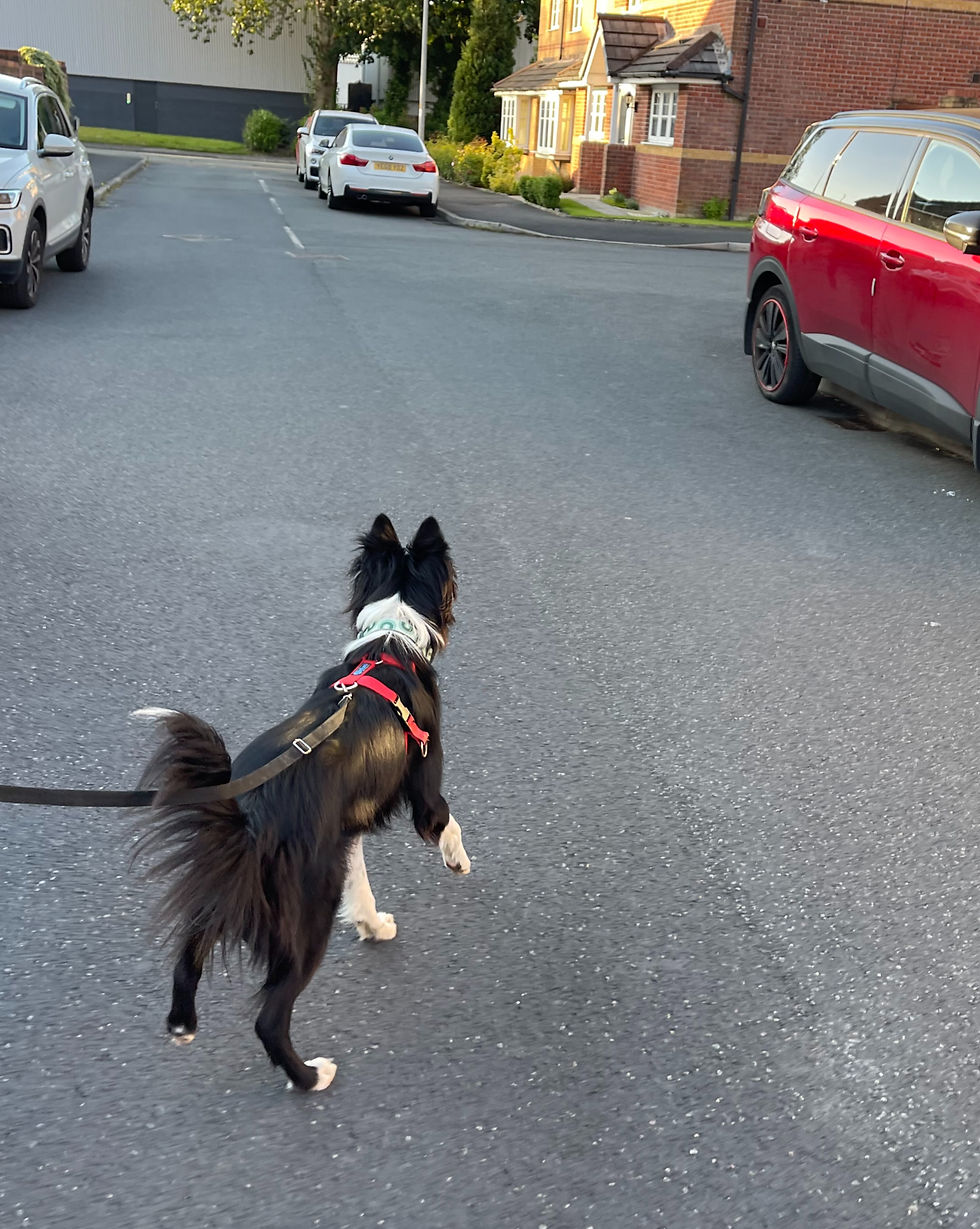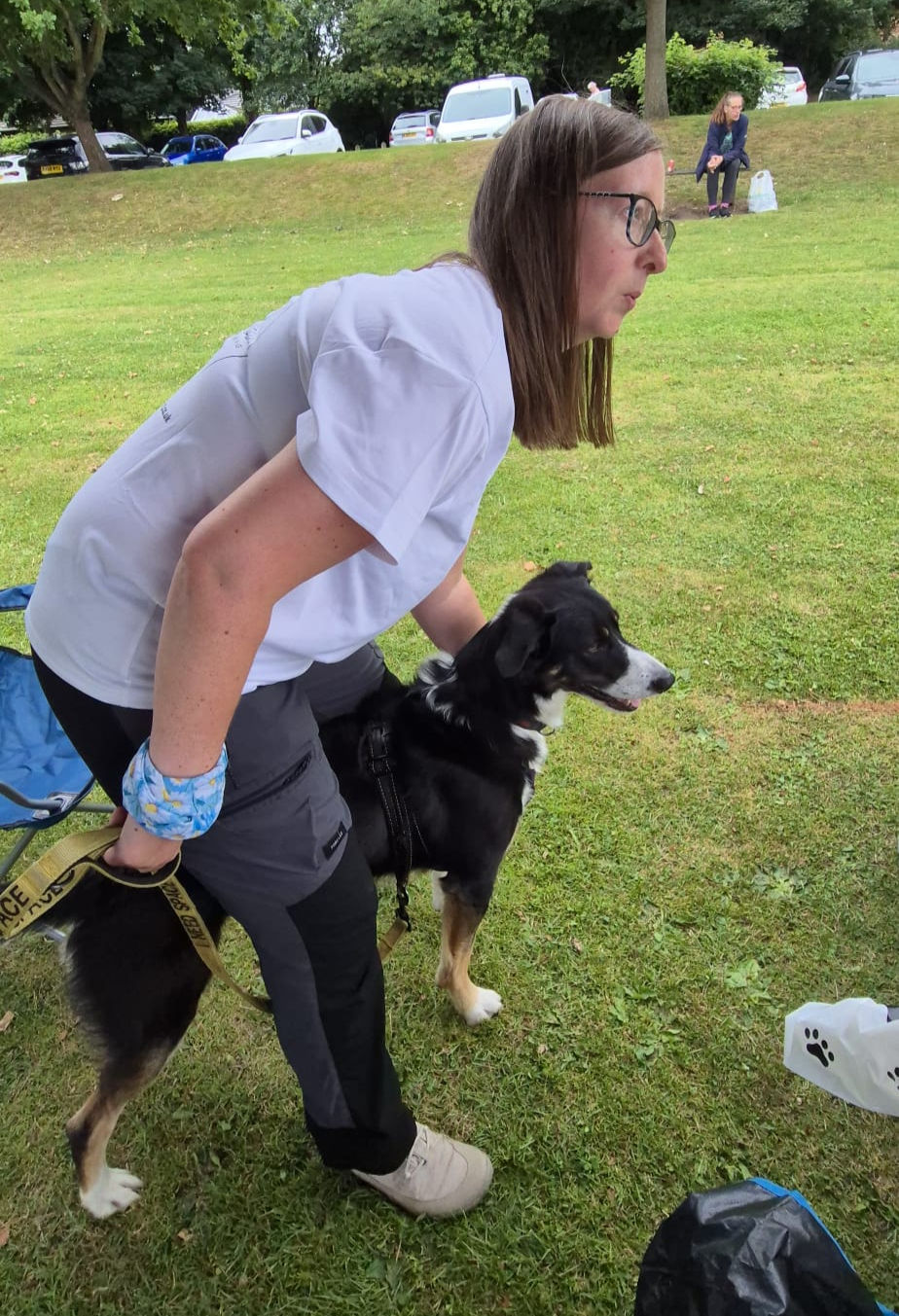Understanding Reactivity in Dogs: Are Reactive Dogs Aggressive?
- Janet

- Aug 7, 2025
- 4 min read
Updated: Aug 31, 2025
Reactivity in dogs is one of the most common behavioural concerns dog owners face. It often shows up as barking, lunging, growling, or pulling on the lead — especially when a dog sees another dog, person, or other stimulus. While these behaviours can be alarming, it's important to understand that reactivity is not about a dog being “bad” or “aggressive.” Instead, it’s usually an emotional response to something in the environment.
Reactivity is often rooted in one of three emotional states: fear or uncertainty, frustration, or excitement. Let’s break each of these down to better understand what your dog may be trying to tell you.
1. Fear-Based Reactivity (or nervous/anxious behaviour)
Many dogs react because they feel afraid or unsure. This type of reactivity is often referred to as fear-based aggression or defensive reactivity.

Common Triggers:
Strangers (especially approaching too fast or trying to pet the dog)
Other dogs (especially if there's been a negative past experience, but not always, and it can also be certain dogs that trigger the reactivity)
Loud noises, fast movements, or unfamiliar objects (things on wheels, children running are common triggers)
What It Looks Like:
Barking or growling while backing away (or moving towards the trigger which is really confusing for dog owners, it seems they want to approach when the opposite is true)
Lunging to create distance
Tail tucked, ears back, body tense
Why It Happens:
Fearful dogs react "inappropriately" because they want to increase space between themselves and the perceived threat. The barking or lunging is their way of saying, “I’m uncomfortable, please stay away.” Unfortunately, if this behaviour works — for example, if a person or dog retreats — it gets reinforced and so they continue to repeat the behaviour. Often, fearful or nervous dogs will approach the trigger while barking/lunging, and this makes it seems as though they want to interact, when actually they're trying to size up the person/dog while also warning them off.
2. Frustration-Based Reactivity
Frustration reactivity is especially common in lead-reactive dogs. These are dogs who might be friendly off-leash, but bark, lunge, or pull when restrained.

Common Triggers:
Other dogs or people they want to greet
Small animals they want to chase
Barriers like leashes, fences, or windows
What It Looks Like:
High-pitched barking
Pulling hard on the leash/lunging on back legs
Whining or spinning in circles
Why It Happens:
This kind of reactivity stems from an unfulfilled desire to interact. The dog is excited to greet or chase something but feels blocked by the lead or environment. Over time, that excitement turns into frustration, and the energy has to go somewhere — often into loud, chaotic behaviour.
3. Excitement-Based Reactivity
Some dogs are just over-the-top excited when they see something they love. Their arousal level spikes so high that they can't control their behaviour.
Common Triggers:

Other dogs
Familiar people
Playtime or car rides
What It Looks Like:
Jumping, barking, spinning, or mouthing
Zoomies or frantic pulling
Difficulty responding to cues or calming down
Why It Happens:
Highly excitable dogs often struggle with impulse control. They may not be fearful or frustrated — they’re simply overwhelmed with enthusiasm. The challenge here is helping them channel that excitement into calmer, more manageable behaviours.
Why Understanding the Root Cause Matters
Not all reactivity is created equal. A fearful dog will need different support than a frustrated or overexcited one. Mislabeling the cause can lead to the wrong training approach — and potentially make things worse.
For example:
Not helping a fearful dog with their fear will lead to continued reactivity because it "works" for them - the scary thing will usually back off when they react.
Ignoring a frustrated dog without teaching better coping skills can increase their frustration.
Letting an overexcited dog “burn it off” without teaching self-regulation may only reinforce chaos.
Helping a Reactive Dog
The first step in helping a reactive dog is to observe carefully and consider their emotional state. Then, work with a qualified force-free trainer or behaviourist to create a plan that may include:
Desensitisation and counter-conditioning
Impulse control and focus training
Management strategies (like avoiding trigger stacking or using visual barriers)
Enrichment and exercise to meet underlying needs
Final Thoughts
Reactivity is a symptom, not a personality flaw. Whether it's rooted in fear, frustration, or excitement, your dog’s reactivity is their way of communicating. With patience, empathy, and the right tools, you can help your dog feel more secure and confident in the world around them.
Ready to Help Your Reactive Dog Thrive?

If your dog struggles with reactivity — whether it’s fear, frustration, or excitement — you're not alone, and you don’t have to navigate it alone either. Reactivity is complex, but with the right approach, real progress is possible.
Let’s work together to build your dog’s confidence and calm.I offer personalised, force-free training programs designed to address the root cause of your dog’s reactivity — not just the symptoms.
Book a free discovery call to discuss your dog’s needs and how I can help.




Comments